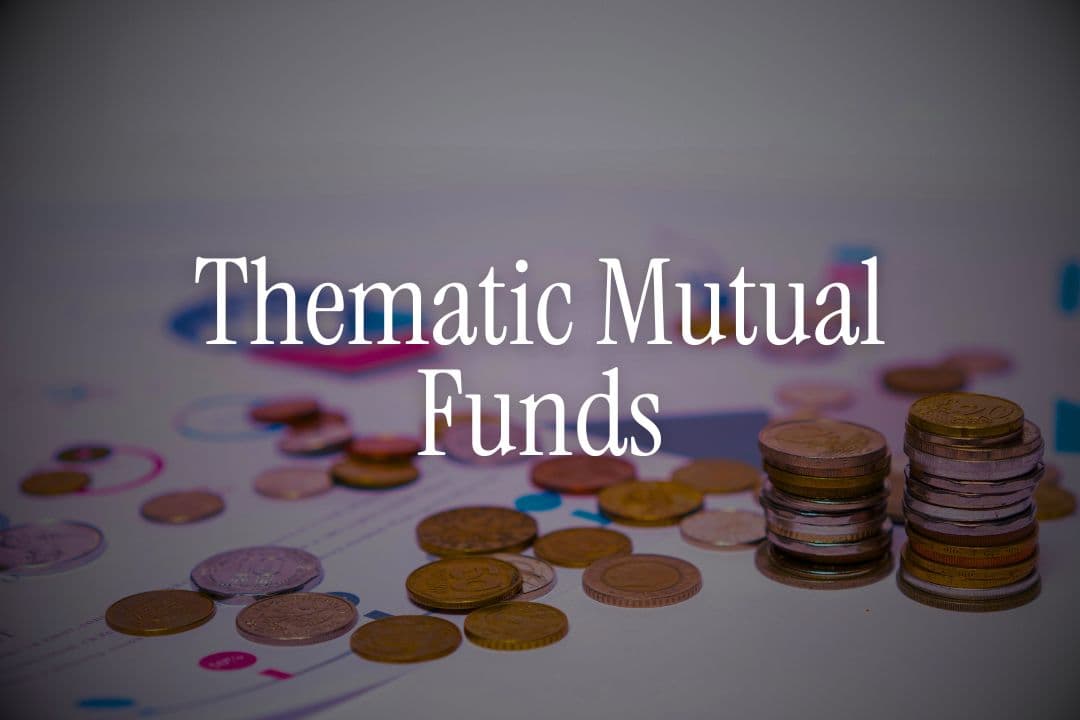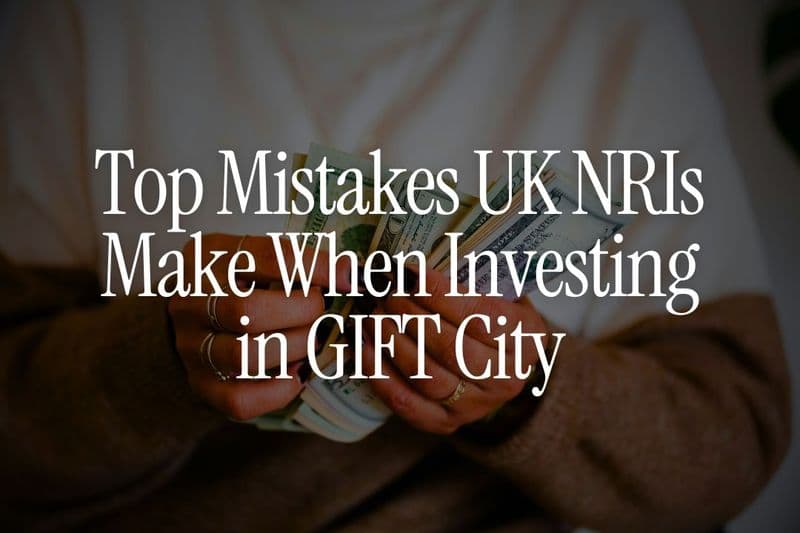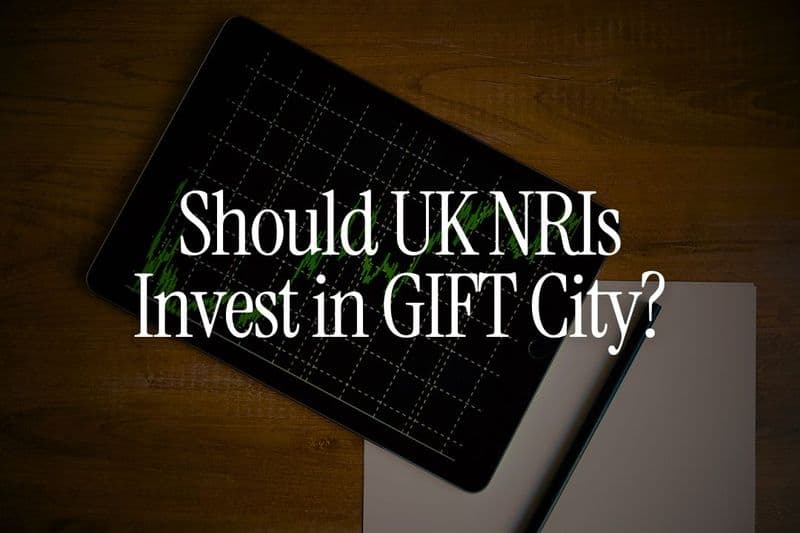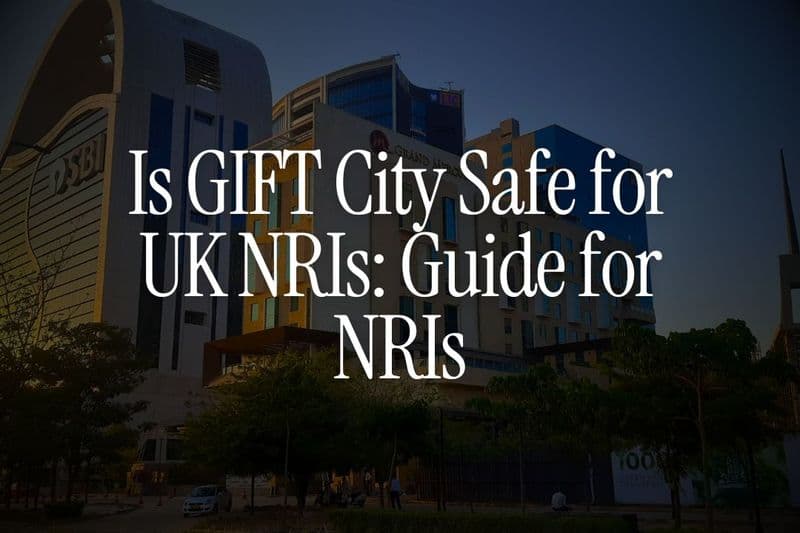
The HDFC Defense Fund delivered ~40% returns in 2024. LIC MF Infrastructure Fund gave ~49%. Bandhan Infrastructure Fund returned ~50%.(Sources at the end of article)
Meanwhile, your friend's diversified large-cap fund gave a decent but unremarkable 14%.
You're sitting in Dubai thinking: "Should I be investing in these thematic funds?"
The FOMO is real. But so are the horror stories. We've seen NRIs at Belong chase hot infrastructure themes at their peak in 2007-08, only to watch them take over a decade to recover.
Here's the uncomfortable truth: thematic mutual funds can multiply your wealth or trap your money for years.
The difference? Knowing which themes to pick, when to enter, and when to stay away.
This guide gives you everything. By the end, you'll know exactly whether thematic funds belong in your NRI portfolio, which themes make sense right now, and how to invest without making expensive mistakes.
The Thematic Fund Explosion: What's Happening in India Right Now
Something shifted in Indian mutual funds in 2024. Of the 161 thematic funds available today, 64 launched after 2020.
Why? Because investors realized something. Broad diversified funds give you market returns. Thematic funds give you sector-specific explosions.
Between January 2023 and March 2024, thematic funds attracted the highest inflows among all equity and hybrid new fund offers, according to AMFI data.
These funds invest based on specific themes - infrastructure development, public sector undertakings, manufacturing growth, defense modernization, rural consumption, ESG compliance.
Unlike sectoral funds that stick to one industry (like only banking or only pharma), thematic funds span multiple related sectors unified by a common idea.
Example: An infrastructure theme includes construction companies, cement manufacturers, steel producers, engineering firms, and power transmission companies. All different sectors, one unifying theme.
This broader approach gives thematic funds more diversification than pure sectoral funds, while still maintaining concentrated exposure to high-growth stories.
For NRIs watching India's transformation from abroad, thematic funds offer a direct play on the country's biggest economic shifts.
Which Themes Are Actually Delivering Right Now?
Let's look at hard numbers. Here are the themes that dominated 2024 performance (data from Value Research):
Theme | Top Performing Fund | 1-Year Return (as of end-2024) | 3-Year CAGR (as of Oct/Nov 2025) | 5-Year CAGR (as of Oct/Nov 2025) | Source Link |
|---|---|---|---|---|---|
Defense | HDFC Defence Fund (Direct) | 20.08% | N/A 2-Year 46.83% | N/A | |
Infrastructure | LIC MF Infrastructure Fund (Direct) | 3.04% | 30.3% | 33.99% | |
Infrastructure | Bandhan Infrastructure Fund (Direct) | N/A | 38.23% | 34.41% | |
PSU | SBI PSU Fund (Direct) | 7.16% | 31.76% | 34.92% | |
Manufacturing | Motilal Oswal Manufacturing Fund (Direct) | 9.63% | N/A | N/A |
(Data as of November 3 2025)
Notice something? The same PSU and manufacturing funds that gave spectacular 3-year returns are down sharply in 2025.
This is the thematic fund reality. When the theme works, returns are extraordinary. When sentiment shifts or government policy changes, these funds can underperform for months or years.
According to SEBI guidelines, thematic funds must invest at least 80% of assets in stocks tied to their declared theme. This concentration creates both the explosive upside and the painful downside.
👉 Tip: Never judge a thematic fund only by its recent 1-year returns. A fund that delivered 70% last year might lose 25% this year. Always check 3-5 year track records and understand the theme's underlying drivers.
How Government Policy Creates Thematic Opportunities for NRIs
India's Union Budget 2025-26 allocated ₹11.11 lakh crore specifically for capital expenditure
, according to Ministry of Finance data.
That's a massive, targeted government spend. And it creates a clear investment thesis for infrastructure thematic funds.
Here's how policy translates to thematic fund opportunities:
1. National Infrastructure Pipeline (NIP) The government identified ₹111 lakh crore worth of infrastructure projects through (2019-2025); extended to 2030 with ~₹150 lakh crore. As of 2025, ~60% sanctioned. (source)
This includes highways, railways, ports, airports, and urban infrastructure.
Companies building these projects directly benefit. So do steel, cement, and engineering firms supporting them.
2. Make in India 2.0
Manufacturing incentives through Production Linked Incentives (PLI) schemes are driving manufacturing-themed funds. The government is targeting electronics, automobiles, pharmaceuticals, and defense manufacturing.
3. Defense Modernization
India’s defense capital outlay ~$100-110 billion planned (2024-29); $130B is aspirational under Atmanirbhar.. The focus on atmanirbhar (self-reliant) defense manufacturing is creating opportunities for domestic defense companies. (source)
4. PSU Disinvestment and Reforms
The government's stake sale in public sector companies and operational reforms are unlocking value in PSU-themed funds. Many PSU stocks trade at lower valuations than private sector peers, offering value investment opportunities.
5. Renewable Energy Transition
With targets of 500 GW renewable energy capacity by 2030, clean energy themes are gaining traction.
These aren't just policy announcements. We've seen actual budget allocations, project awards, and company order books growing.
For NRIs, this matters because you're investing from abroad with limited ability to track daily news. Thematic funds aligned with clear government priorities reduce your research burden while letting you participate in India's targeted growth areas.
But here's the catch: by the time you hear about a theme, it's often already priced in. More on that in the risks section.
The Infrastructure Story: Why This Theme Dominates NRI Portfolios
Let's dive deep into one theme because it perfectly illustrates how thematic investing works.
The opportunity: India's infrastructure was historically underfunded. Poor roads, congested ports, unreliable power - these were growth bottlenecks.
The government recognized this. Infrastructure capex ~3.3-3.7% of GDP in FY25; total public capex ~5-6%. 8% is overstated. (source) The National Infrastructure Pipeline identifies over 9,500 projects across energy, roads, railways, and urban infrastructure.
The companies that benefit:
- Construction: Larsen & Toubro, NCC Limited, IRB Infrastructure
- Cement: UltraTech, Ambuja, ACC
- Steel: SAIL, Tata Steel
- Engineering: Bharat Heavy Electricals, KEC International
- Power Transmission: Power Grid Corporation
An infrastructure thematic fund invests across all these sub-sectors, creating a diversified play on one mega-theme.
The returns: Infrastructure funds delivered 25-28% annualized returns over 5 years, significantly outperforming benchmark indices.
The risks: But here's what they don't tell you in the marketing brochures. Infrastructure is cyclical.
After the 2008 global financial crisis, infrastructure funds crashed. According to BusinessToday research, it took over a decade for infrastructure sector indices to recover to their January 2008 levels.
Investors who bought at the 2007-08 peak waited 12 years just to break even.
This is the thematic fund trap. You need to get both the theme AND the timing right.
👉 Tip: Infrastructure works best when government capital expenditure is accelerating, land acquisition challenges are resolved, and funding costs are low. If you see delays in project approvals or rising interest rates, infrastructure stocks typically struggle.
PSU Funds: The Value Play That Everyone Debates
Public Sector Undertaking (PSU) funds invest in government-controlled companies across banking, oil & gas, power, and infrastructure.
The bull case:
- PSU stocks trade at lower Price-to-Earnings ratios than private sector peers
- Government disinvestment and privatization could unlock value
- Dividend yields are stable (many PSUs pay consistent dividends)
- Policy support for atmanirbhar initiatives benefits PSUs
The bear case:
- Government interference in management decisions
- Slower decision-making compared to private companies
- Political considerations sometimes override commercial logic
- Historical underperformance versus private sector competitors
Recent performance: SBI PSU Fund gave 28.2% annualized returns over 3 years (2022-24). But in 2025 YTD, it's down 11.6%.
What changed? Market sentiment shifted from value stocks to growth stocks. When growth comes back in fashion, value-oriented PSU stocks underperform.
Who should invest? PSU funds work for investors who:
- Believe government-controlled companies are undervalued
- Want stable dividend income
- Can tolerate cyclical performance
- Have investment horizons of 5+ years
For NRIs, PSU funds can be part of a broader portfolio, but probably shouldn't be your only India exposure.
According to fund managers at Motilal Oswal and ICICI Securities, PSU stocks offer asymmetric risk-reward opportunities when bought during market pessimism, but timing is everything.
Also Read -Best Mutual Funds for NRIs to Invest in India
When Thematic Funds Fail Spectacularly: Lessons from History
Let us share what we've learned helping NRIs at Belong invest in India over the past decade.
The IT Bubble (2000): Fund houses launched IT-focused thematic funds at the peak of the dotcom boom. Tech funds shot up 200-300% as retail investors piled in.
Then the bubble burst. Investors who bought at the peak in 2000 waited over 7 years to recover their capital.
The Infrastructure Boom-Bust (2007-2008): Dozens of infrastructure funds launched NFOs (New Fund Offers) between 2007-08, right at the market peak. Infrastructure stocks crashed during the 2008 financial crisis.
Recovery took 10-12 years. Many investors gave up and exited at losses.
The Recent Manufacturing Correction (2025): Manufacturing-themed funds were hot through 2024. Motilal Oswal Manufacturing Fund delivered strong returns. Then came the 2025 market correction.
The fund is down 22.7% YTD in 2025. Investors who bought in late 2024 at peak valuations are now sitting on losses.
What's the pattern?
Fund houses typically launch theme-based funds after the theme has already performed well. They market them when excitement is highest and media coverage is maximum.
By that time, valuations are stretched. Smart money has already entered. Retail investors - including many NRIs - enter last and often face the worst outcomes.
According to BusinessToday analysis, "Most fund houses tend to launch sector funds at peak times."
This doesn't mean thematic funds are bad. It means timing matters enormously.
👉 Tip: When you see advertisements, roadshows, and media buzz around a theme, that's usually a sign you're late. The best time to invest in a theme is when nobody's talking about it, valuations are reasonable, and you have strong conviction based on fundamentals, not momentum.
Also Read - Comparing Indian Mutual Funds vs UAE Mutual Funds
Thematic vs Sectoral Funds: What's the Real Difference?
Many NRIs confuse these two. Here's the critical distinction:
Sectoral Funds invest in a single industry. A banking fund only holds banks. A pharma fund only holds pharmaceutical companies.
Thematic Funds invest across multiple sectors united by a theme. An infrastructure theme includes construction (sector), cement (sector), steel (sector), and engineering (sector).
Aspect | Sectoral Funds | Thematic Funds |
|---|---|---|
Diversification | Very narrow (one industry) | Broader (multiple related industries) |
Risk | Highest concentration risk | High but somewhat diversified |
Volatility | Extreme | High but relatively lower |
Returns Potential | Highest if sector performs | High if theme performs |
Recovery Time After Crash | Often longest (10+ years) | Still long (5-7 years) |
Example:
A Banking Sectoral Fund only holds banks: HDFC Bank, ICICI Bank, SBI, Axis Bank, Kotak Mahindra Bank.
An Infrastructure Thematic Fund holds: L\&T (construction), UltraTech (cement), SAIL (steel), BHEL (engineering), Power Grid (utilities).
If banking sector crashes due to bad loans, a sectoral fund has nowhere to hide. A thematic fund has more cushioning because not all sub-sectors crash simultaneously.
But don't mistake this for safety. Thematic funds are still concentrated bets. They're just slightly less concentrated than pure sectoral funds.
According to SEBI's categorization guidelines, both sectoral and thematic funds must invest minimum 80% in their declared sector/theme, ensuring focused exposure.
The Tax Reality for NRI Investors in Thematic Funds
Here's where it gets practical. Thematic funds are equity-oriented funds, so they follow equity taxation rules.
For equity-oriented funds (≥65% in domestic equity):
Short-term capital gains (STCG) - if you sell within 12 months:
- Tax rate: 20% (updated in Budget 2024, was 15% earlier)
- TDS deducted at source by fund house
- Applies to gains on investments sold within one year
Long-term capital gains (LTCG) - if you hold for more than 12 months:
- First ₹1.25 lakh of gains per financial year: Tax-free
- Gains above ₹1.25 lakh: Taxed at 12.5%
- No indexation benefit
Example calculation:
You invest ₹15 lakh in Bandhan Infrastructure Fund in January 2024. By March 2026 (holding period: 26 months), your investment grows to ₹22 lakh.
Your long-term capital gain = ₹7 lakh
Tax calculation:
- First ₹1.25 lakh: Tax-free
- Remaining ₹5.75 lakh: Taxed at 12.5% = ₹71,875
Total tax = ₹71,875
TDS and DTAA benefits:
For NRIs, the fund house deducts TDS on LTCG at 12.5% and on STCG at 20%.
If you're based in the UAE, you can claim DTAA (Double Taxation Avoidance Agreement) benefits. Since UAE has 0% personal income tax, you only pay tax in India - no double taxation.
How to claim DTAA:
- Obtain Tax Residency Certificate (TRC) from UAE authorities
- Submit TRC and Form 10F to your mutual fund registrar
- This ensures correct TDS rates
- File your Indian Income Tax Return to claim any excess TDS refund
According to recent Budget 2024 changes, the revised STCG rate of 20% (up from 15%) affects short-term traders more than long-term investors.
If you're holding thematic funds for 3-5+ years as recommended, the 12.5% LTCG rate remains attractive compared to debt fund taxation (which is as per your income slab rate, typically 30% for NRIs).
👉 Tip: Always hold thematic funds for more than 12 months to qualify for LTCG rates. The tax difference between STCG (20%) and LTCG (12.5%) is substantial. Patient investors save significantly on taxes.
Also Read - Taxation on Mutual Funds
How to Pick the Right Theme: Our Framework at Belong
After helping thousands of NRIs invest at Belong, we've developed a framework for evaluating themes.
1. Check Government Budget Allocation
Look at actual budget allocations, not just policy announcements. Infrastructure got ₹11.11 lakh crore. Defense modernization got specific allocations. These aren't wishes - they're committed spends.
Where government money flows, corporate profits follow.
2. Assess Long-Term Structural Demand
Some themes are temporary (COVID-related pharma surge). Others are structural (infrastructure deficit, defense modernization, energy transition).
Structural themes last 5-10+ years. Temporary themes fade in 1-2 years.
3. Evaluate Valuations
Check the average Price-to-Earnings (P/E) ratio of stocks in the theme. Compare it to:
- Historical average P/E
- Broader market P/E
- Growth rate of earnings
If infrastructure stocks trade at 35x earnings while historically they traded at 20x, valuations are stretched. Wait for corrections.
Use resources like Tickertape Stock Screener or Value Research to check valuations.
4. Look at Fund Manager Track Record
Who's managing the fund? Have they navigated past cycles successfully?
ICICI Prudential Infrastructure Fund is managed by Ihab Dalwai. HDFC Infrastructure Fund is managed by Srinivasan Ramamurthy. These managers have 10-15+ year track records.
Experience matters in thematic investing because timing and stock selection are critical.
5. Check Fund House Quality
Invest through reputed fund houses with strong research teams: ICICI Prudential, HDFC, SBI, Aditya Birla Sun Life, Nippon India.
Avoid new fund houses launching theme-based NFOs without proven expertise.
6. Understand the Exit Triggers
Before you invest, define why you'd exit. Examples:
- Government cuts budget allocation to the theme
- Valuations exceed 50x earnings
- Regulatory policy changes harm the theme
- Fund underperforms benchmark for 3+ years
Having clear exit criteria prevents emotional decision-making during volatility.
7. Size Your Position Appropriately
Even if you love a theme, limit exposure to 5-10% of your total India portfolio.
If you have ₹50 lakh to invest in India, put maximum ₹5 lakh in one thematic fund. The remaining ₹45 lakh should go into diversified funds, large-cap funds, and stable options like GIFT City FDs.
Warren Buffett's advice applies here: "Limiting your investment in any single sector to no more than 10% of your total portfolio helps manage risk."
Risk Checklist: When Should NRIs Avoid Thematic Funds?
We're big believers in knowing when NOT to invest. Here's when thematic funds are a bad idea:
1. You're new to equity investing
If you've never invested in equity mutual funds before, don't start with thematic funds. They're volatile and timing-sensitive.
Begin with flexi-cap funds or large-cap funds that give broad market exposure. Add thematic exposure only after you've built a core portfolio.
2. You need the money in less than 5 years
Thematic funds can take years to recover from corrections. If you're saving for a goal 2-3 years away (buying property, child's education), use safer options like fixed deposits or debt funds.
3. You can't handle 30-40% volatility
In 2025, some thematic funds lost 20-25% in just 3 months. If that kind of swing makes you panic-sell, avoid these funds entirely.
Your risk tolerance matters more than potential returns.
4. You're chasing recent performance
If you're investing because a fund gave 70% last year, you're chasing momentum. This is the most common NRI mistake.
High recent returns often mean valuations are stretched and the easy gains are behind you.
5. You can't monitor your investments
Thematic funds require active monitoring. You should review quarterly performance, check if the underlying theme is still intact, and rebalance if needed.
If you're too busy or don't want that hassle, stick to hybrid mutual funds or index funds that need minimal attention.
6. The theme is already in the news everywhere
When newspapers, TV channels, and social media are buzzing about a theme, retail investor inflows are typically peaking. This is when valuations get dangerous.
The best investments are made quietly, when themes are overlooked and undervalued.
According to BusinessToday's analysis of sectoral/thematic fund cycles, "Most retail investors would be better off avoiding thematic and sectoral funds in their portfolios while equity as an asset class tends to be highly volatile."
👉 Tip: If you're unsure whether you can handle thematic fund volatility, do this test: Imagine your ₹10 lakh investment dropping to ₹7 lakh in 3 months. Can you resist the urge to sell? Can you hold for 3+ years? If the answer is no, avoid thematic funds.
Top Thematic Funds to Consider in 2025 (With Caution)
Before we share this list, a critical disclaimer: We're not recommending these funds. We're showing you what's available so you can research further.
Past performance doesn't guarantee future results. Many high-performing funds reverse sharply. Always assess based on your goals, risk appetite, and conviction in the theme.
Fund Name | Theme | 1-Year Return (Latest) | 3-Year CAGR (as of Oct/Nov 2025) | 5-Year CAGR (as of Oct/Nov 2025) | AUM (₹ Cr, Latest) | Min. SIP | Source Link |
|---|---|---|---|---|---|---|---|
ICICI Prudential Infrastructure Fund (Direct) | Infrastructure | -2.7% (2025 context) | 28.5% | 37.70% | 7,941 | ₹100 | |
Bandhan Infrastructure Fund (Direct) | Infrastructure | N/A | 28.2% | 34.41% | 2,850 | ₹100 | |
Aditya Birla SL PSU Equity Fund (Direct) | PSU | -11.6% (2025 context) | 28.2% | 37.13% | 5,418 | ₹100 | |
SBI PSU Fund (Direct) | PSU | -10.4% (2025 context) | 27.8% | 33.50% | 5,278 | ₹500 | |
Quant Infrastructure Fund (Direct) | Infrastructure | N/A | N/A | 34.25% | 1,200 | ₹1,000 | |
HDFC Infrastructure Fund (Direct) | Infrastructure | -4.3% (2025 context) | 28.1% | 35.31% | 2,540 | ₹100 |
(Data as of November 32025 from Value Research, and other fund house websites)
Notice the pattern? Strong 3-5 year returns, but negative or low 1-year returns in 2025. This illustrates the cyclical nature perfectly.
Other themes to watch (not invest blindly):
- Manufacturing: Motilal Oswal Manufacturing Fund (volatile but backed by PLI schemes)
- Defense: HDFC Defense Fund (spectacular returns but extremely concentrated)
- Consumption: ICICI Prudential FMCG Fund (plays rural + urban consumption growth)
Fund houses accepting NRI investors: Most major AMCs accept NRI investments: ICICI Prudential, HDFC, SBI, Aditya Birla Sun Life, Nippon India, Axis.
US/Canada NRI note: Due to FATCA (Foreign Account Tax Compliance Act) compliance issues, many fund houses don't accept US and Canadian NRI investors online. Some allow offline investments with additional documentation.
If you're US-based, check directly with the AMC before proceeding. Alternatively, platforms like iNRI specialize in helping US NRIs invest in Indian mutual funds.
Step-by-Step: How to Invest in Thematic Funds from UAE
Let's walk through the exact process.
Step 1: Confirm Your NRI Status
Use our Residential Status Calculator to determine if you're classified as NRI, RNOR, or Resident for tax purposes.
Your status affects taxation and ITR filing requirements.
Step 2: Open NRE or NRO Account
You cannot invest using your old resident savings account. You need either:
NRE Account (Non-Resident External):
- For foreign-sourced income (your UAE salary)
- Fully repatriable (can bring money back anytime, no limits)
- Interest earned is tax-free
NRO Account (Non-Resident Ordinary):
- For India-sourced income (rent, dividends, pension)
- Partially repatriable (up to USD 1 million per year)
- Interest earned is taxable
For mutual fund investments, we recommend NRE account if you're investing fresh foreign income. This keeps everything fully repatriable.
Read our detailed guide: NRE vs NRO vs FCNR Accounts Explained
Step 3: Complete NRI KYC
You'll need:
- Copy of passport (with UAE visa)
- Overseas address proof (Emirates ID, residence visa, utility bill)
- PAN card (apply online if you don't have one)
- Recent photograph
- Cancelled cheque or bank statement (NRE/NRO account)
- OCI card (if applicable)
Many banks now offer video KYC, making it convenient from Dubai. HDFC Bank, ICICI Bank, and Axis Bank have streamlined NRI onboarding.
Step 4: Choose Your Investment Platform
Option 1: Direct Fund House Website Go to ICICI Prudential, HDFC, SBI mutual fund websites. Register as NRI investor. Invest directly in their funds.
Advantage: Lower expense ratios (direct plans vs regular plans) Disadvantage: You manage multiple fund houses separately
Option 2: Aggregator Platforms Use platforms like:
- Groww (accepts most NRIs except US/Canada)
- Zerodha Coin
- ET Money
- INDmoney
- iNRI/GoINRI (specializes in NRI investments)
Advantage: One dashboard for multiple funds Disadvantage: Some platforms have FATCA restrictions
Option 3: Through Your Bank If you have NRE/NRO account with ICICI, HDFC, Axis, or SBI, you can invest through their wealth management portals.
Step 5: Link Your Bank Account
Whichever platform you choose, link your NRE or NRO account. The platform will send a small test transaction (₹1-10) to verify.
Once verified, you can set up:
- One-time lump sum investments
- SIP (Systematic Investment Plan) with auto-debit
Step 6: Select the Thematic Fund
Research using:
- Value Research for fund analysis
- Moneycontrol for NAV and returns
- Fund factsheets (available on AMC websites)
Check:
- 3-5 year performance (not just 1 year)
- Expense ratio (lower is better, ideally below 1%)
- AUM (bigger funds have more stability)
- Fund manager experience
- Portfolio holdings (which stocks does it hold?)
Step 7: Decide Lump Sum or SIP
Lump Sum: Good if you have a large amount and believe valuations are attractive. Risk: you could invest at a peak.
SIP (Systematic Investment Plan): Invest a fixed amount monthly (₹5,000, ₹10,000, ₹25,000, etc.). This averages your purchase cost over time, reducing timing risk.
Our recommendation for thematic funds: SIP over 12-18 months rather than lump sum. This gives you rupee-cost averaging and reduces the risk of entering at a peak.
Minimum SIP amounts are typically ₹100-1,000. Minimum lump sum is usually ₹1,000-5,000.
Step 8: Set Up Payment
For SIP, authorize an auto-debit mandate. Your bank will automatically transfer funds monthly.
For lump sum, you can pay via:
- Net banking
- NEFT/RTGS
- UPI (if you have an Indian UPI-enabled account)
Step 9: Monitor Quarterly
Don't check your fund every week. Thematic funds are volatile, and daily tracking will stress you out.
Instead, set a quarterly review:
- Is the theme still valid?
- Is the fund performing relative to its benchmark?
- Are valuations still reasonable?
- Should you continue SIP, pause, or exit?
Use Belong's tools to compare your fund's performance against other investment options like GIFT City FDs or alternative investment funds.
👉 Tip: Enable email/SMS alerts for all transactions. Always verify units are credited to your folio. Check your Consolidated Account Statement (CAS) monthly from your registrar (CAMS or KFintech).
Portfolio Allocation Strategy for NRIs
Here's how we recommend structuring your India investment portfolio if you want to include thematic funds:
Conservative NRI Portfolio (Low risk tolerance):
- 50% GIFT City USD Fixed Deposits (safety, dollar-denominated)
- 30% NRE Fixed Deposits (tax-free interest)
- 15% Large-cap or Index Mutual Funds
- 5% Thematic Mutual Funds (as satellite holding)
Moderate NRI Portfolio (Medium risk tolerance):
- 30% GIFT City USD FDs or NRE FDs
- 30% Flexi-cap Mutual Funds
- 20% Hybrid Mutual Funds
- 20% Thematic Funds (split across 2 themes)
Aggressive NRI Portfolio (High risk tolerance, 10+ year horizon):
- 20% Fixed income (FDs for liquidity)
- 40% Diversified Equity Funds (large-cap, flexi-cap, mid-cap)
- 30% Thematic Funds (infrastructure, PSU, manufacturing)
- 10% Alternative Investment Funds or international equity
Key principles:
Core-Satellite Approach: Keep 70-80% in core holdings (diversified funds, FDs). Use 20-30% for satellite bets (thematic funds).
Don't Put All Money in One Theme: If investing in thematic funds, split across 2-3 uncorrelated themes. For example: Infrastructure + Healthcare + Consumption. Don't put everything in infrastructure alone.
Rebalance Annually: If your thematic fund allocation grows to 40% due to strong performance, book profits and rebalance back to your target allocation.
Consider Currency Risk: All INR-denominated investments (including mutual funds) are exposed to rupee depreciation. Use our Rupee vs Dollar Tracker to monitor currency trends.
Keep Emergency Fund Separate: Never invest emergency funds in thematic funds. Keep 6-12 months of expenses in liquid assets like NRE savings accounts or liquid funds.
When to Exit a Thematic Fund
Knowing when to sell is as important as knowing when to buy.
Exit triggers we follow at Belong:
1. The theme no longer makes sense Government cuts budget allocation significantly. Regulatory changes harm the sector. The structural story breaks down.
Example: If India suddenly prioritizes hydrogen energy over traditional infrastructure, infrastructure themes could weaken.
2. Extreme valuation stretch If stocks in the theme trade at valuations 2x their historical average without corresponding earnings growth, it's a bubble.
3. Prolonged underperformance If your fund underperforms its category benchmark for 3+ consecutive years, the fund manager isn't adding value. Switch to a better-managed fund.
4. Better opportunities emerge If GIFT City FDs are offering 5% in USD risk-free, and your thematic fund is volatile without clear upside, it might make sense to reallocate.
5. You need the money Sometimes life events require liquidity. Thematic funds are growth investments, not parking spots for near-term needs.
6. Your risk tolerance changed Maybe when you invested, you were single with high risk appetite. Now you have a family, responsibilities, and lower risk tolerance. It's okay to shift to conservative options.
Tax-efficient exit strategy:
If you're sitting on large gains, exit in stages to stay within the ₹1.25 lakh annual LTCG exemption limit. This minimizes tax liability.
Example: You have ₹20 lakh gains. Instead of exiting all at once and paying 12.5% on ₹18.75 lakh, exit over 3-4 years:
- Year 1: Book ₹5 lakh gain, pay tax only on ₹3.75 lakh
- Year 2: Book ₹5 lakh gain, pay tax only on ₹3.75 lakh
- And so on…
This staged approach saves lakhs in taxes.
Thematic Funds vs Other NRI Investment Options
Let's put thematic funds in perspective:
Option | Expected Returns | Risk Level | Liquidity | Tax Efficiency | Best For |
|---|---|---|---|---|---|
4.5-6% USD | Very Low | Medium | Tax-free | Capital safety, USD exposure | |
6.5-7.5% | Very Low | Medium | Tax-free | Rupee exposure, safety | |
Large-Cap Equity Funds | 10-12% | Medium | High | 12.5% LTCG | Long-term wealth, stability |
10-14% | Medium | High | 12.5% LTCG if equity-oriented | Balanced growth | |
Thematic Mutual Funds | 15-30% | High | High | 12.5% LTCG | High growth, specific conviction |
Mid/Small Cap Funds | 15-25% | Very High | High | 12.5% LTCG | Aggressive growth |
When thematic funds make sense:
- You've already built a core portfolio of 60-70% in safe assets
- You have strong conviction in a specific theme
- Your investment horizon is 5+ years
- You can tolerate 30-40% volatility
- You want to participate in India's sectoral growth stories
When other options make more sense:
- You're risk-averse → Stick to GIFT City FDs or NRE FDs
- You want simple, passive investing → Choose index funds or flexi-cap funds
- You need funds within 3 years → Use debt funds or FDs
- You want dollar-denominated safety → GIFT City USD FDs at Belong
According to SEBI investor education materials, retail investors who maintained broadly diversified portfolios saw more consistent returns over 10+ years compared to those who concentrated in sectoral/thematic funds.
How Belong Can Help You Invest Smarter
At Belong, we've built a suite of tools and products specifically for NRIs.
Why we created Belong: We saw NRIs struggling with:
- Confusing tax rules
- Currency conversion costs
- Complex repatriation procedures
- Limited investment options abroad
- No trusted guidance
So we built solutions:
1. GIFT City USD Fixed Deposits
Earn 4.5-6% returns in USD with:
- Zero tax (IFSC exemption)
- Full repatriation (no limits)
- No currency risk (dollar-denominated)
- DICGC insurance (up to $100,000)
This is perfect as your portfolio's safe foundation before you add thematic funds.
2. NRI FD Comparison Tool
Compare rates across NRE, NRO, FCNR, and GIFT City FDs from all major banks - all in one place.
3. Compliance Compass
Not sure if you're following all rules? Use our Compliance Compass to check banking, investment, and tax compliance.
4. Rupee vs Dollar Tracker
Monitor INR-USD trends to understand how currency movements affect your returns.
5. Alternative Investment Funds
Explore GIFT City AIFs for sophisticated NRI investors seeking diversification beyond mutual funds.
But here's what truly matters:
You're not just getting products. You're joining a community of NRIs who share your challenges and goals.
Join 5,000+ NRIs in Our Community
We've built a vibrant WhatsApp community where NRIs discuss:
- Investment strategies and fund picks
- Tax planning and ITR filing tips
- Repatriation experiences
- Banking and compliance questions
- Market updates and opportunities
No spam. No sales pitches. Just valuable discussions and expert guidance.
Recent community conversations:
- "Should I exit my PSU fund after 25% gains?"
- "Best way to repatriate ₹80 lakh from NRO account?"
- "Infrastructure fund tax implication if I return to India mid-year?"
Real questions. Real answers from fellow NRIs and our team.
Conclusion: Should YOU Invest in Thematic Funds?
Let's bring it all together.
Thematic mutual funds can be powerful wealth creators - if you get the theme right, time your entry well, and have the patience to hold through volatility.
They're not for:
- First-time investors
- Those needing money within 5 years
- Risk-averse personalities
- People who can't handle 30-40% swings
They are for:
- Experienced investors with core portfolios in place
- Those with strong conviction in specific themes
- Investors who can research and monitor actively
- People comfortable with high volatility for higher returns
The bottom line: Don't make thematic funds your primary India investment. Use them as 5-15% of your total portfolio to participate in specific high-growth themes.
Build your foundation with:
- 40-50% in GIFT City FDs or NRE FDs
- 30-40% in diversified equity funds (flexi-cap, large-cap)
- 10-15% in hybrid funds
- Then add 5-15% in thematic funds if you have conviction
And remember: Past performance of 70% doesn't mean future returns of 70%. In fact, it often means the opposite - valuations are stretched and the easy gains are behind you.
Ready to get started?
Download the Belong App to compare investment options, access our tools, and explore GIFT City FDs that complement your thematic fund strategy.
Or join our WhatsApp Community to discuss thematic investing with fellow NRIs and get expert insights before making decisions.
Disclaimer: This article is for educational purposes only and does not constitute financial advice. Thematic mutual funds are subject to high market risks. Past performance is not indicative of future returns. Please read all scheme-related documents carefully before investing. Consult a SEBI-registered investment advisor for personalized guidance based on your financial situation.
Related Articles:
- Best NRI Mutual Fund Investment Options in India
- Hybrid Mutual Funds in India: The Complete NRI Investment Guide
- Best NRI Fixed Deposits: NRE vs NRO vs FCNR vs GIFT City FDs
- GIFT City for NRIs: Tax Benefits, Investment Options & How to Start
- Best Mutual Funds to Invest in 2025
- NRI Taxation Guide: DTAA Benefits, ITR Filing & Tax Saving Tips
- NRI Capital Gains Tax in India: TDS Rules & How to Save Tax
- Belong NRI Investment in GIFT City: Complete Guide
- Alternative Investment Funds in GIFT City




